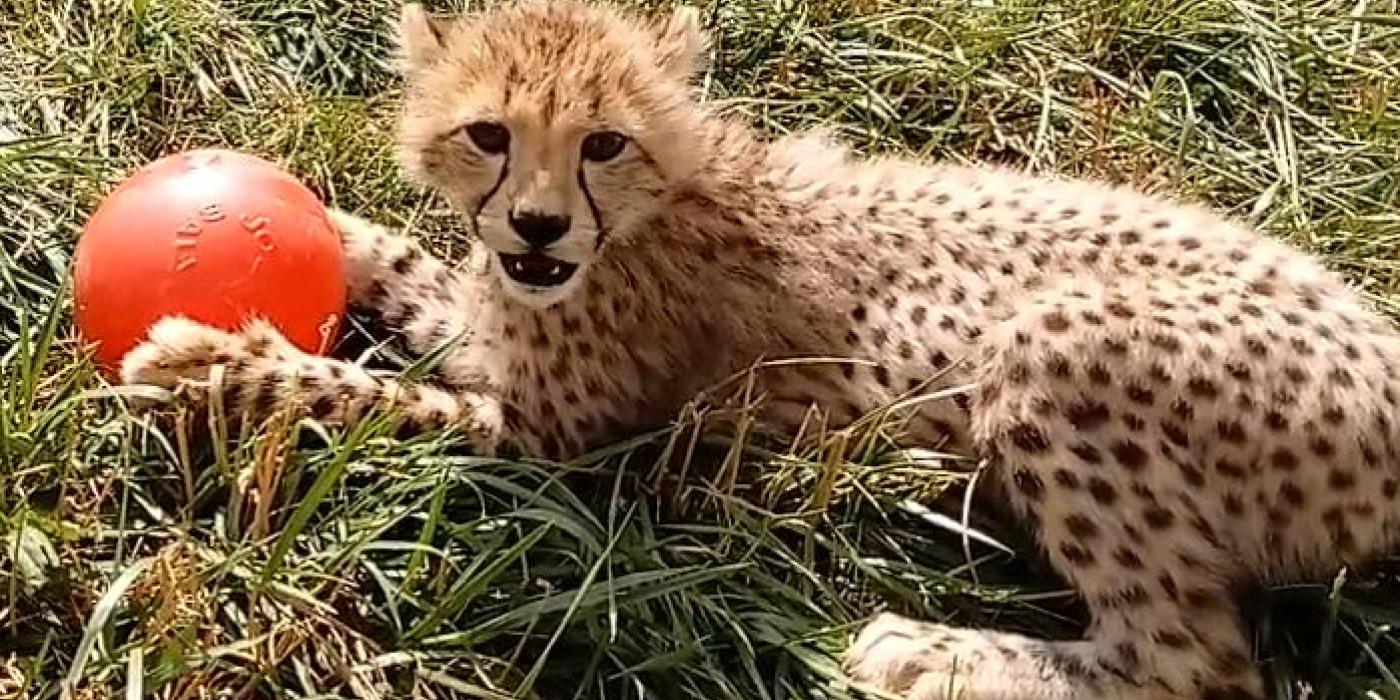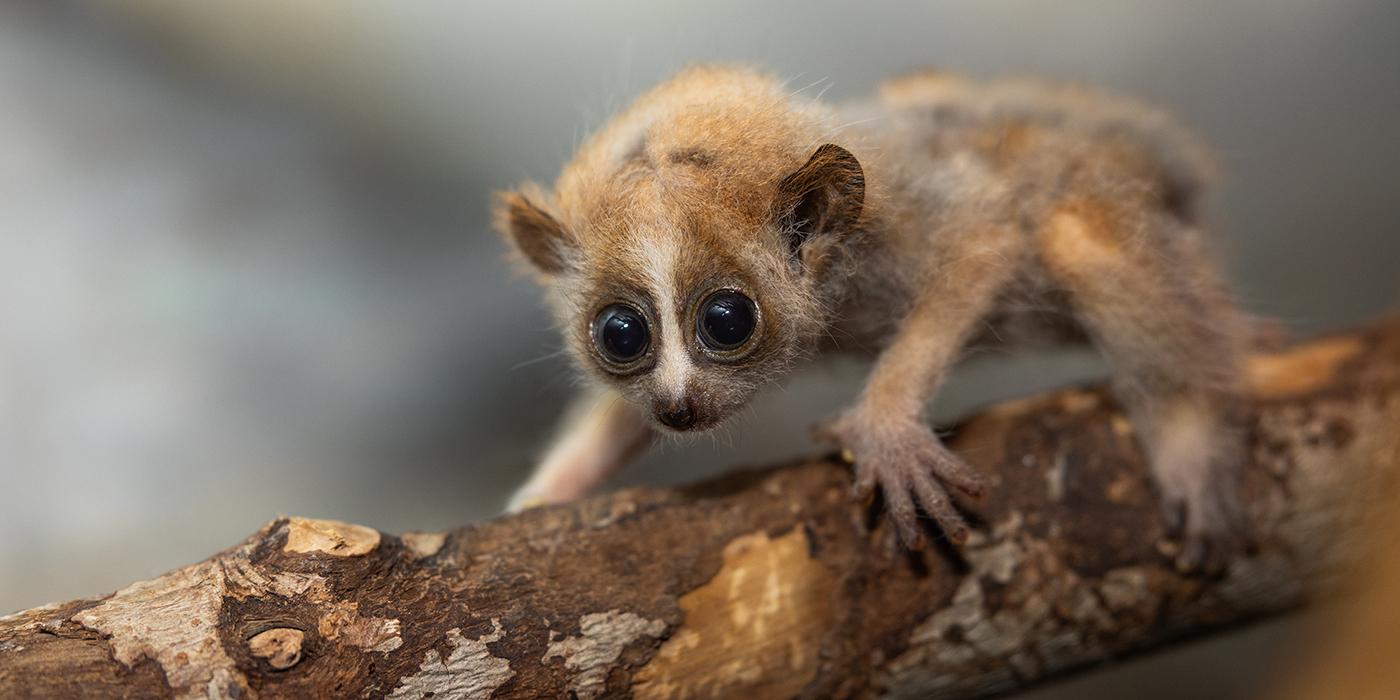Enrichment at the Smithsonian Conservation Biology Institute

Get a behind-the-scenes glimpse of how keepers at the Smithsonian Conservation Biology Institute (SCBI) enrich the lives of their animals by presenting them with toys, training and novel food items. Help keepers purchase enrichment items! Make a donation to the Animal Enrichment Program.
Who Says Cats Don’t Like Water
One of the ways SCBI keepers add variety to the cheetahs’ day is by providing them the opportunity to interact with a pool of water, which is not something that exists in their enclosures but something that they would encounter in the wild. To give juveniles Asante, Scotty and Rosalie an outlet to express their curiosity, keepers tossed in some floating toys as well. As predators, cheetahs are naturally inclined to investigate things that move (and that could potentially be prey). The jolly balls bob along the surface of water, making them an irresistible object of pursuit.
Chow Time
It may not look like it, but these cheetah cubs are being trained while they eat. After keepers dish out the daily diets, they sit next to the cubs, a process called “proximity training.” The first step in training an animal is to acclimate him/her to the presence of keepers, which helps to build trust. SCBI keepers practice positive reinforcement training to monitor the health and well-being of the cheetahs in their care. The cats always have the choice to participate or walk away. If they do the behavior asked of them, they receive a reward in the form of their favorite food: meatballs.
Playing With Food
For SCBI’s Persian onagers and Hartmann’s mountain zebras, playing with their food is a daily occurrence, and for good reason: keepers want the animals to stay mentally and physically active. Recently, the ungulates received kabobs made from produce and bamboo. Onagers Sayeh and Zaria worked together to problem-solve and, ultimately, enjoy their vegetables.
This story appears in the September 2017 issue of National Zoo News.


